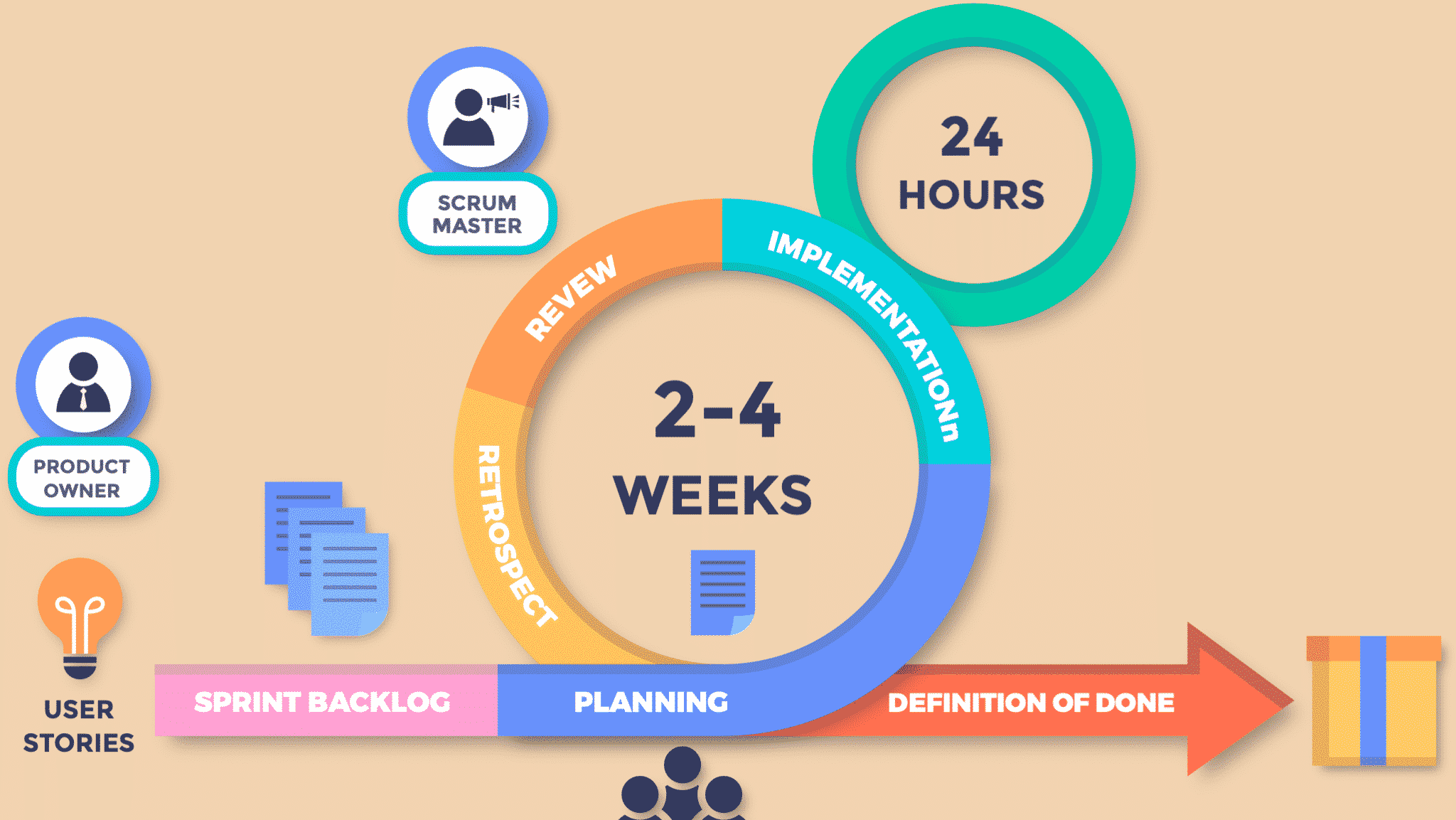Scrum organizes projects using cross-functional Scrum teams, each one of which has all of the capabilities necessary to deliver a piece of functionality from idea to delivery.

The Scrum framework
The Scrum framework guides the creation of a product, focusing on value and high visibility of progress. Working from a dynamic list of the most valuable things to do, a Scrum team brings that product from an idea to delivery using the Scrum framework as a guide for transparency, inspection, and adaptation.
Read next: MarTech’s agile marketing for teams
Scrum events
Scrum is probably best known for events or activities that occur inside each sprint.
- The Sprint is the heartbeat of Scrum. Each sprint should bring the product closer to the product goal and is a month or less in length.
- Sprint Planning by the entire Scrum team establishes the sprint goal, what can be done, and how the chosen work will be completed.
- Daily Scrum serves to inspect the progress toward the sprint goal, adjusting the upcoming planned work.
- Sprint Review – The entire Scrum team inspects the sprint’s outcome with stakeholders and determines future adaptations. Stakeholders are invited to provide feedback on the increment.
Snapshot: Marketing work management platforms
Work environments have changed drastically due to the COVID-19 pandemic. This has heightened the need for work management tools that help marketers navigate these new workflows.
Fortunately, many marketers have been at work developing processes that allow them to work with those outside their own offices. Marketing projects—campaigns, websites, white papers, or webinars—frequently involve working with outside sources.
The pandemic brought all these changes to a fever pitch, as projects needed to be completed by a workforce isolated in their home offices. Societal changes increased the need for businesses to speed up their digital transformations as more interactions became digital.
These changes require marketers to design interfaces, write content, and create engaging visual assets. That’s why marketers are adopting agile workflow practices. In fact, 42% of marketers surveyed in a report by AgileSherpas and Aprimo said they were using agile in 2020, which is up from 32% in 2019.
All of these changes have heightened the need for marketing work management software, which optimizes and documents the projects undertaken by digital marketers. They often integrate with other systems like digital asset management platforms and creative suites. But most importantly, these systems improve process clarity, transparency, and accountability, helping marketers keep work on track. Learn more here.
The post What is Scrum, the project management framework agile teams rely on? appeared first on MarTech.

0 Comments